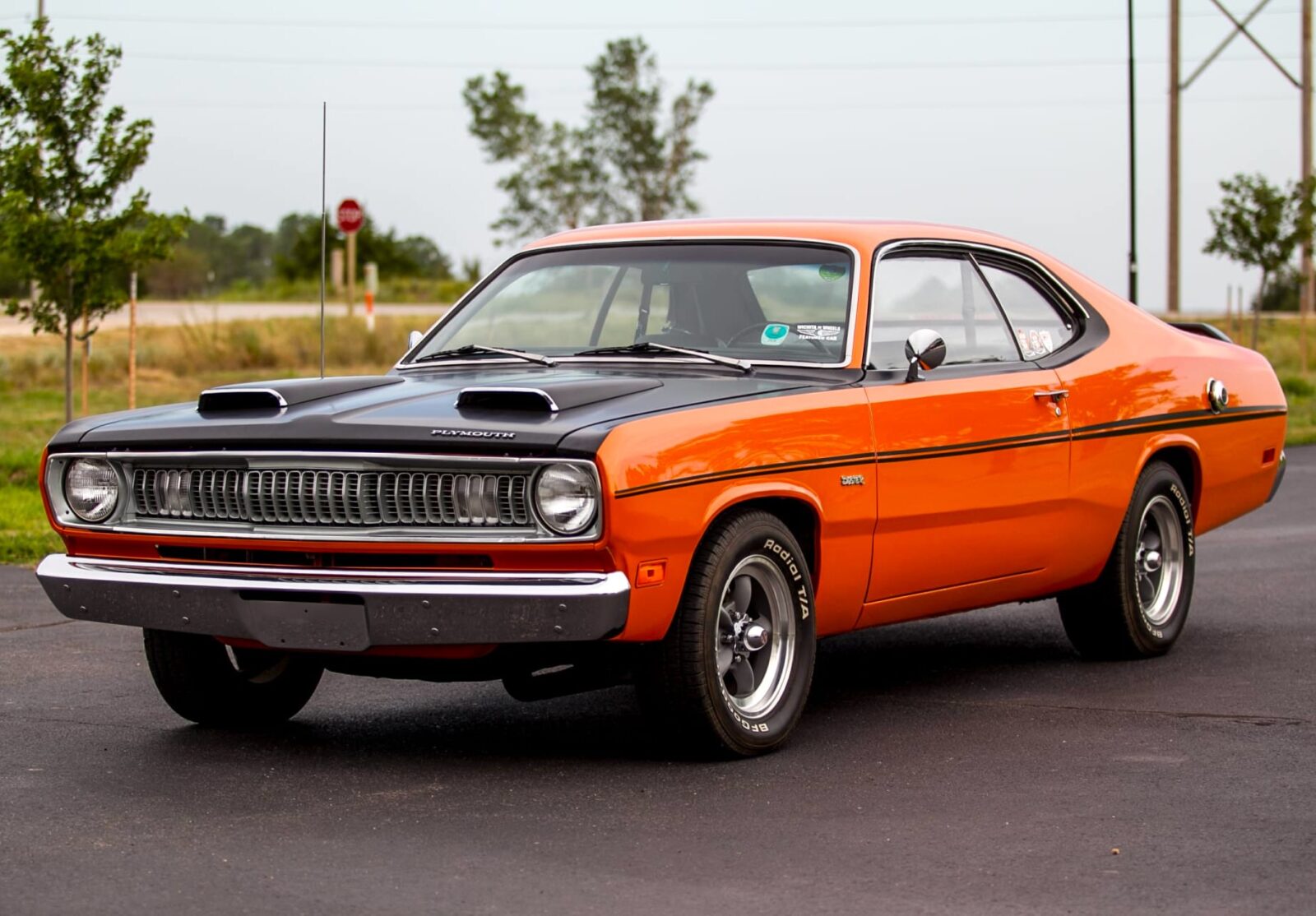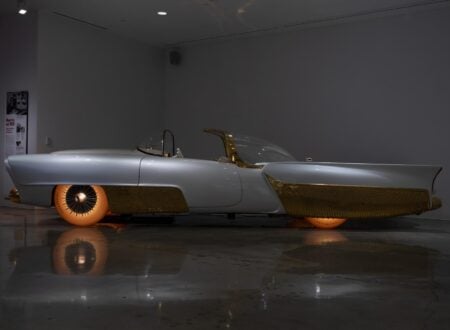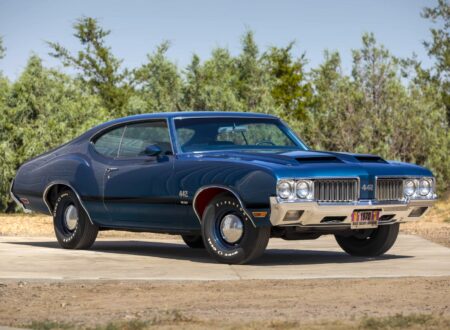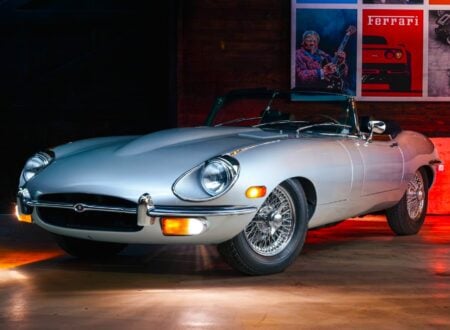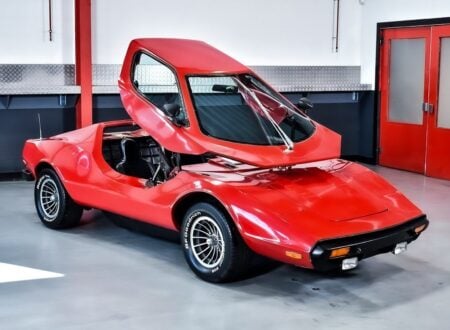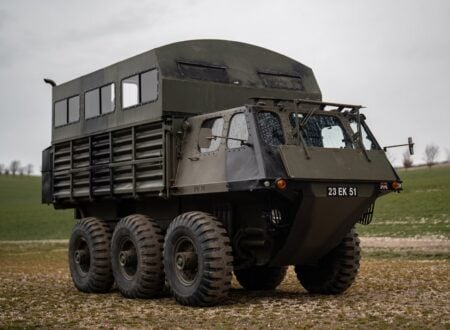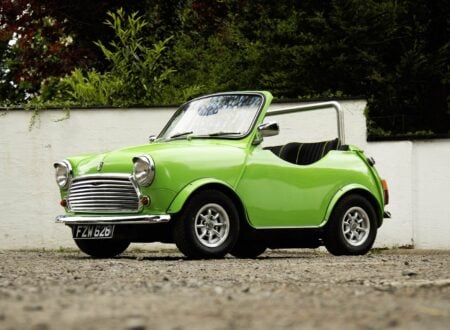The Plymouth Duster made its debut for the 1970 model year as an affordable V8 performance coupe designed to compete with the likes of the Ford Maverick, AMC Hornet, and Chevrolet Nova.
The Duster has long been seen as a wolf in sheep’s clothing, but has flown well under the radar for many, perhaps overshadowed by the more famous V8 coupes of the era like the Mustang, Camaro, Firebird, Javelin, and Challenger. This means it now offers excellent value for money, and performance that’s often more than a match for its contemporaries.
Fast Facts – The 1970 Plymouth Duster
- The Plymouth Duster debuted in 1970 as an affordable V8 performance coupe, designed to compete with the Ford Maverick, AMC Hornet, and Chevrolet Nova. Known for its unassuming appearance, the Duster offered impressive performance for its price.
- Originally, the Duster was nearly branded with the Warner Brothers Tasmanian Devil character, following the success of the Plymouth Road Runner. However, the plan fell through, and the car’s name instead referenced “dust devils” or short-lived whirlwinds.
- Built on the Plymouth Valiant platform, the Duster was exclusively available as a two-door hardtop with V8 engine options, reflecting Plymouth’s push for an affordable yet sporting vehicle. Various engine and transmission configurations catered to either economy or performance-minded drivers.
- The 1970 Plymouth Duster featured here has a 318 cubic inch V8, 4-speed manual transmission, and several upgrades, such as fuel injection, disc brakes, and air conditioning. It’s set to be auctioned in December, attracting collectors for its unique modifications and history.
The Plymouth Tasmanian Devil. Almost.
Interestingly, when the Duster was being developed there were negotiations with Warner Brothers to license the use of the Tasmanian Devil cartoon character. This was following in the footsteps of the Plymouth Road Runner which had used the licensed likeness of the cartoon character along with Wile E. Coyote.
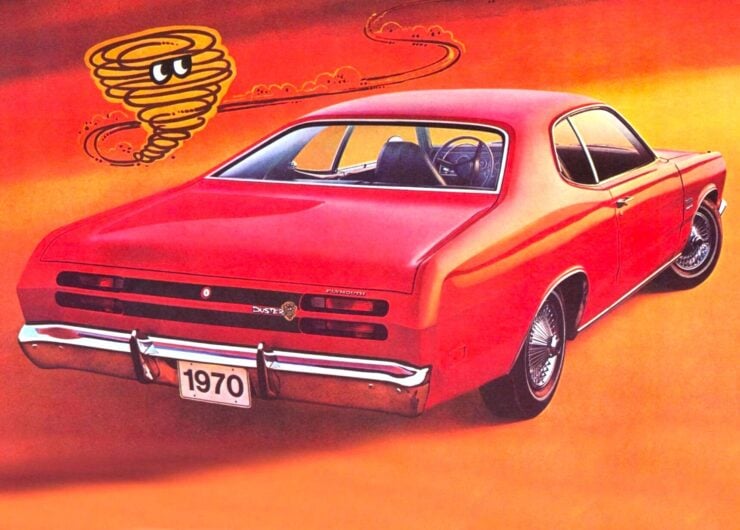

For reasons lost to history, the negotiations didn’t work out, otherwise the Duster may very well have been named the “Tasmanian Devil” or “Devil” and used the likeness of the cartoon character in its body decals and branding.
In colloquial American English, a “duster” is a dust devil, a short-lived whirlwind characterized by a swirling funnel of dust extending upwards into the sky. These dusters were caused by the Warner Brothers Tasmanian devil character due to its high-speed spinning, and it seems the name was adopted for the car after the failed negotiations to license the character.
The Plymouth Duster
The Plymouth marque was launched by Chrysler in 1928 as a new competitor for Ford and Chevrolet, both of which offered lower-priced, mass-produced cars that were selling by the train load. The name Plymouth was chosen after the historic Plymouth Rock, as it was said to evoke durability, reliability, and American heritage.
The Plymouth Duster was introduced for the 1970 model year as a car very much in line with the founding principles of Plymouth – it was developed as a low cost car to compete once again with Ford and Chevrolet. The Duster was based on the Plymouth Valiant platform, and remained much the same as the Valiant from the A-pillar forward.
Unlike the competing Ford Maverick, AMC Hornet, and Chevrolet Nova, the Duster would only be available as a two-door hardtop coupe – the others could all be ordered in either two- or four-door variants.
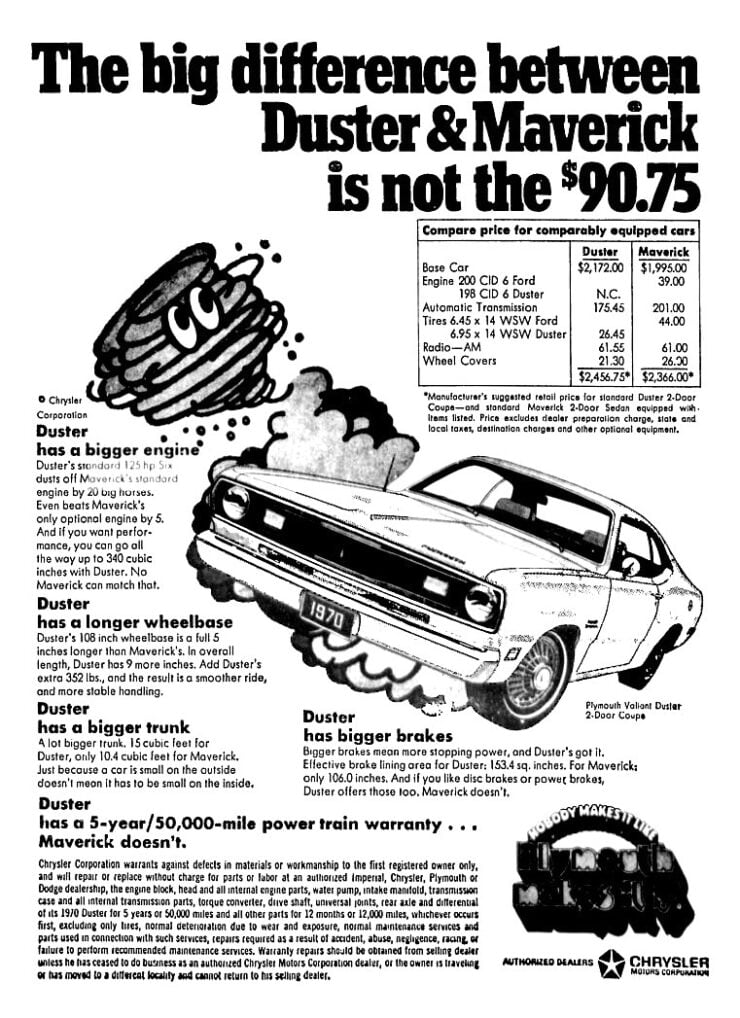

This was perhaps a clear sign that Plymouth executives wanted the Duster to be a halo car of sorts in this model segment, with a sporting “semi-fastback” roofline, V8 engine options, and a series of optional upgrades to further boost performance.
When ordering your Plymouth Duster at the dealership you would have had the options of two inline-six engines, or three V8s ranging from 318 cubic inches to 340, then up to 360. Transmission options included both 3- and 4-speed manuals and a 3-speed TorqueFlite automatic.
Over the course of the 1970 to 1976 production run, the Duster was offered in a wide range of option package variants, including the Gold Duster, Silver Duster, Space Duster, Duster Twister, Duster 340, Duster 360, and perhaps most memorably, the lightweight Feather Duster.
The Duster would be replaced with the Plymouth Volaré after 1976, an unpopular Malaise Era model that would remain in production for just four years until 1980.
The 1970 Plymouth Duster Shown Here
The car you see in this article is a 1970 Plymouth Duster fitted with the 318 cubic inch (5.2 liter) V8 and the 4-speed manual transmission. This engine and transmission option was popular with sporting minded drivers as it resulted in the lightest V8 variant of the Duster, tipping the scales at 2,865 lbs, notably less than the 3,110 lb 340 V8 equipped version.
The 318 V8 was a member of the Chrysler LA engine family, and the version fitted to the Duster was good for 230 hp at 4,400 rpm with 275 lb ft of torque at 5,000 rpm. The engine also responded well to tuning, and many owners significantly improved their power output with a series of bolt-on mods.
This particular Duster now benefits from a few upgrades, including the fitment of a FAST (Fuel Air Spark Technology) fuel injection system, aluminum heads, aftermarket exhaust headers, front disc brakes, and Vintage Air air conditioning.
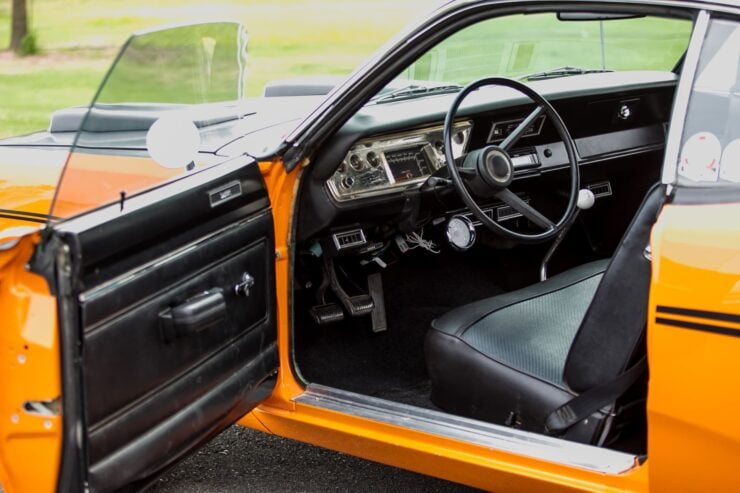

The car also has a “Sharktooth” grille, a front bench seat with heaters, a flat black hood with dual scoops, a rear deck spoiler, a Challenger-style flip-open gas cap door, and cruise control.
It’s now due to roll across the auction block with Mecum on the 6th of December in Kansas City and you can visit the listing here if you’d like to read more about it or register to bid.
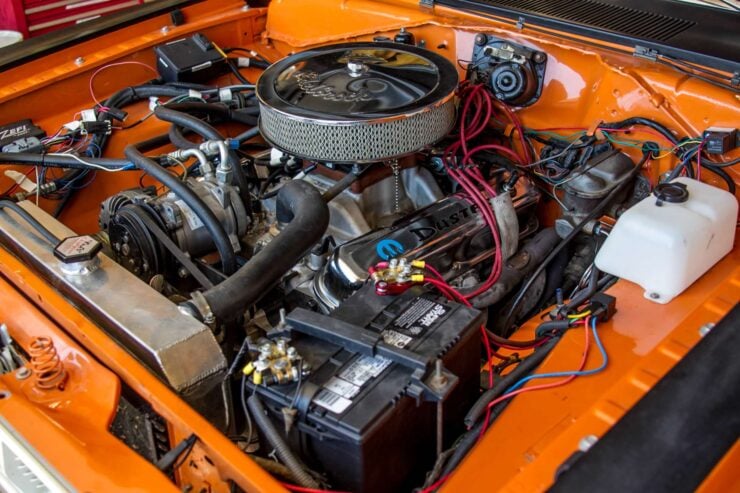
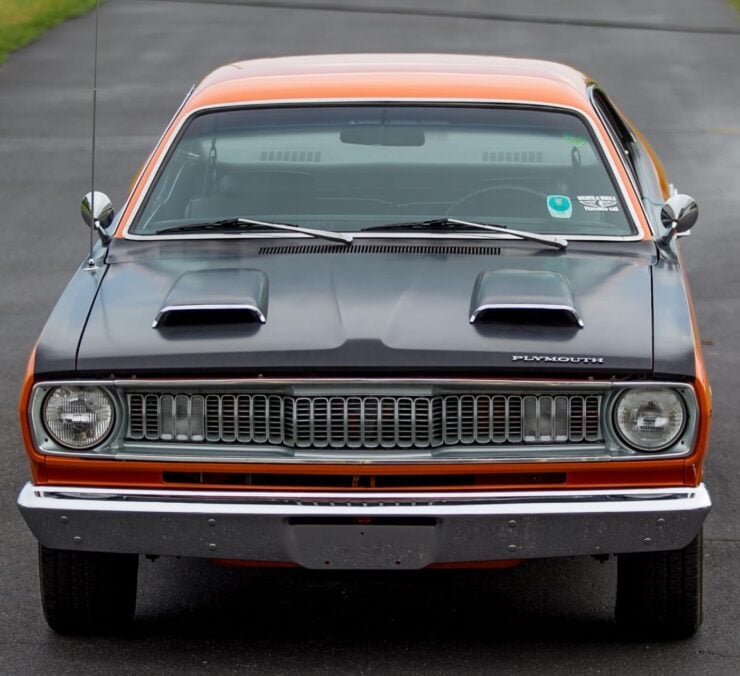
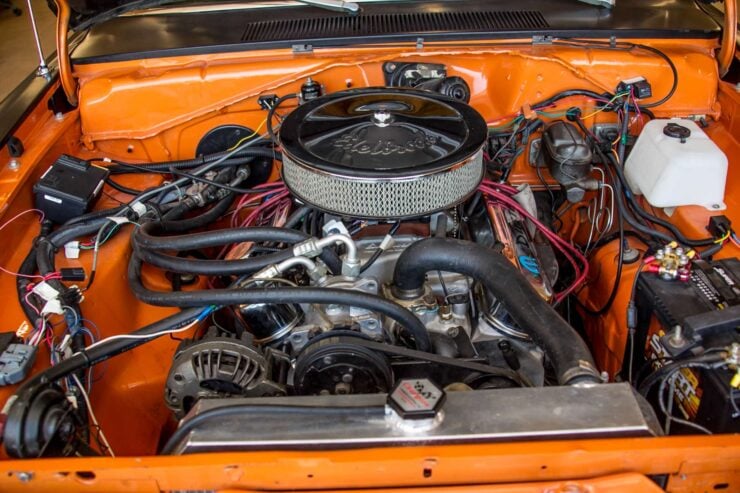
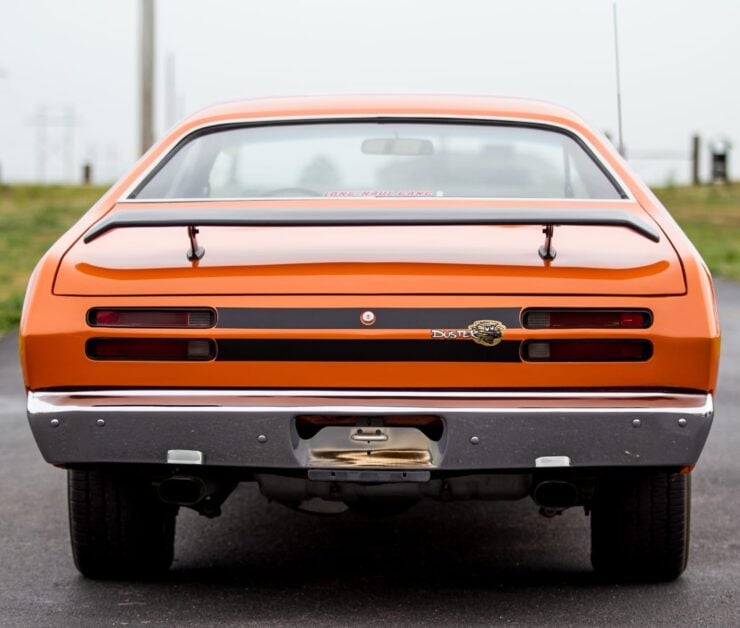
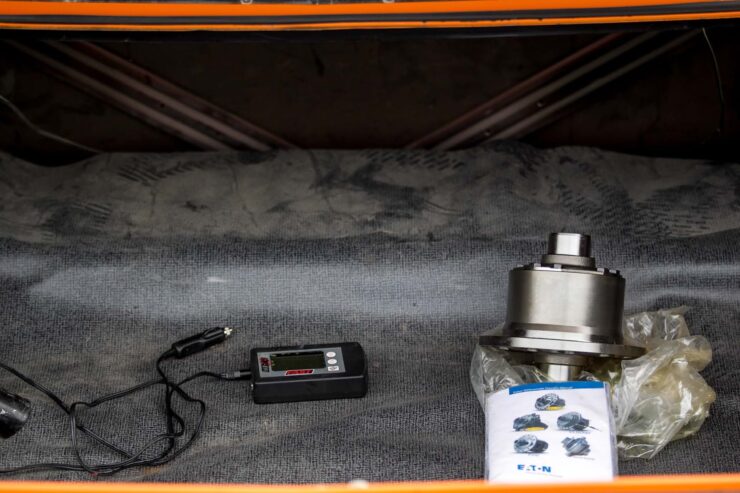
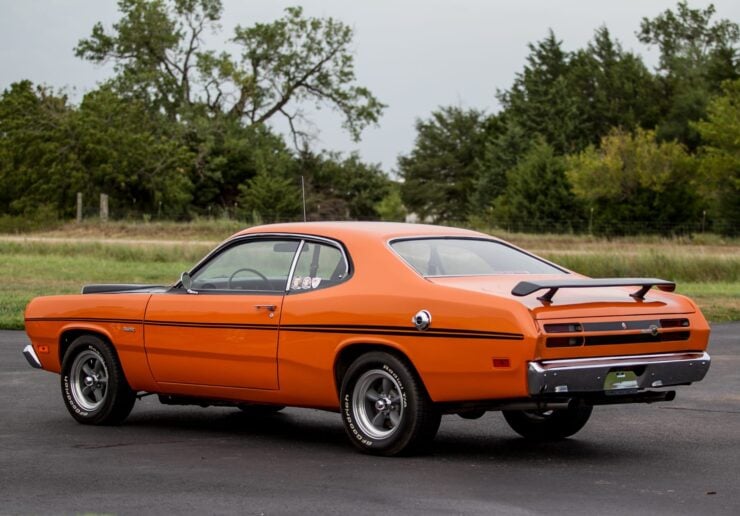
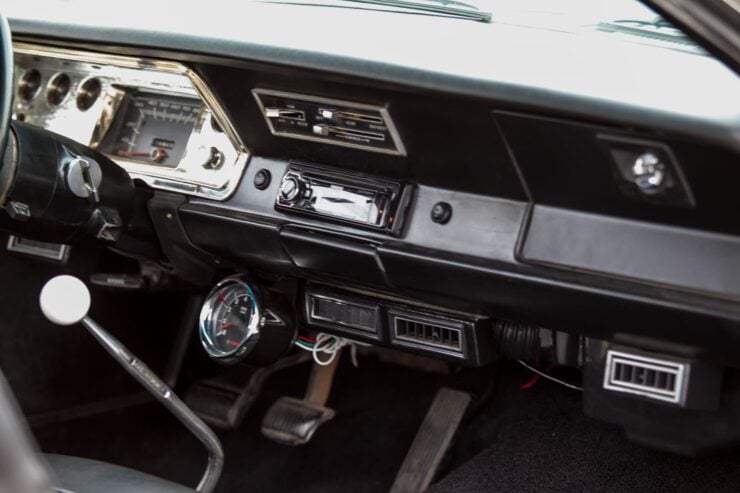
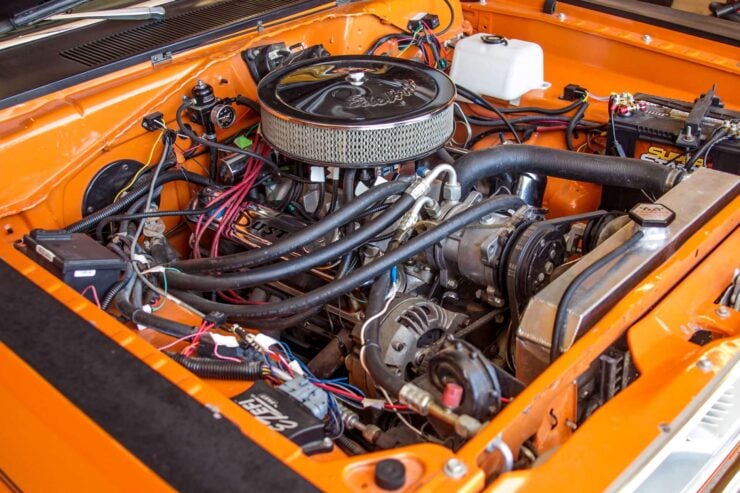
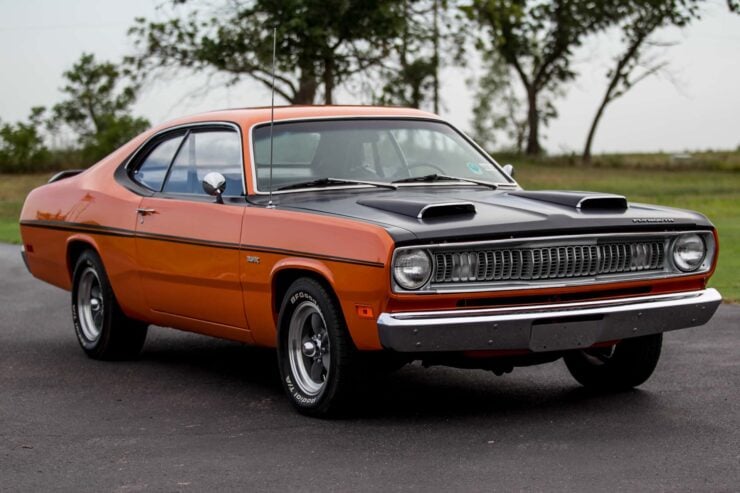
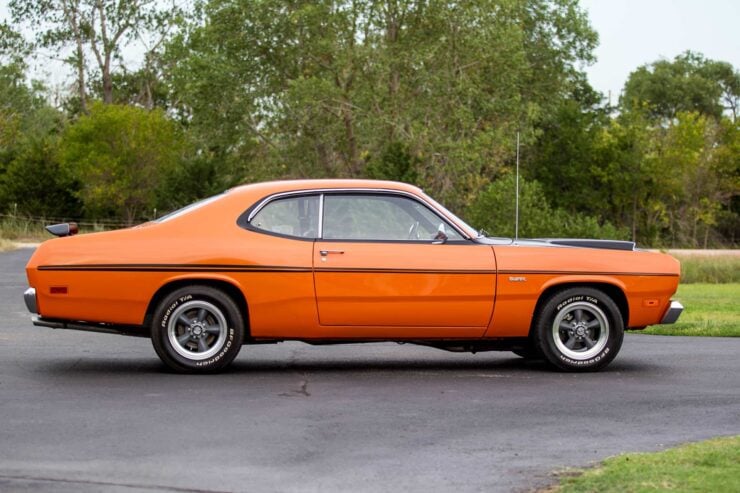
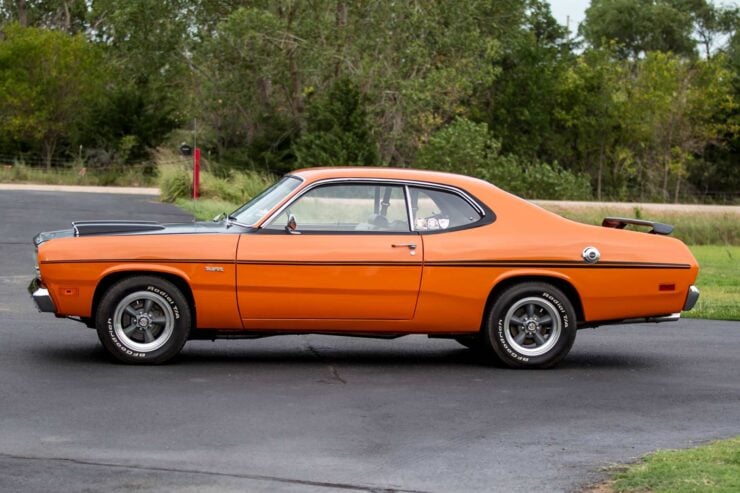
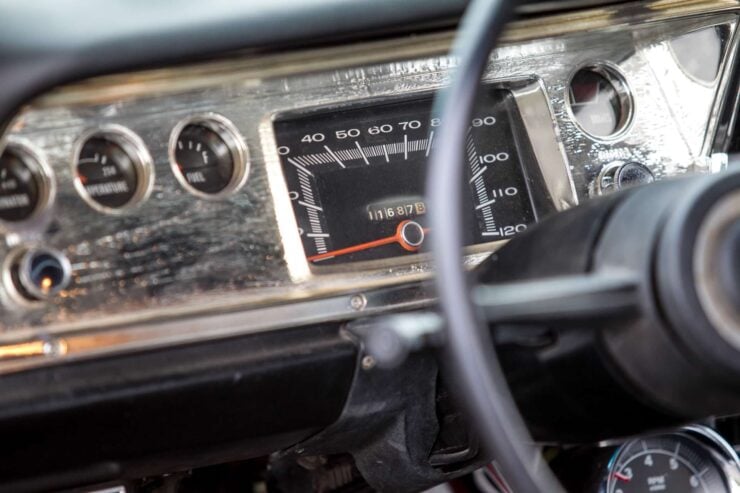
Images courtesy of Mecum

